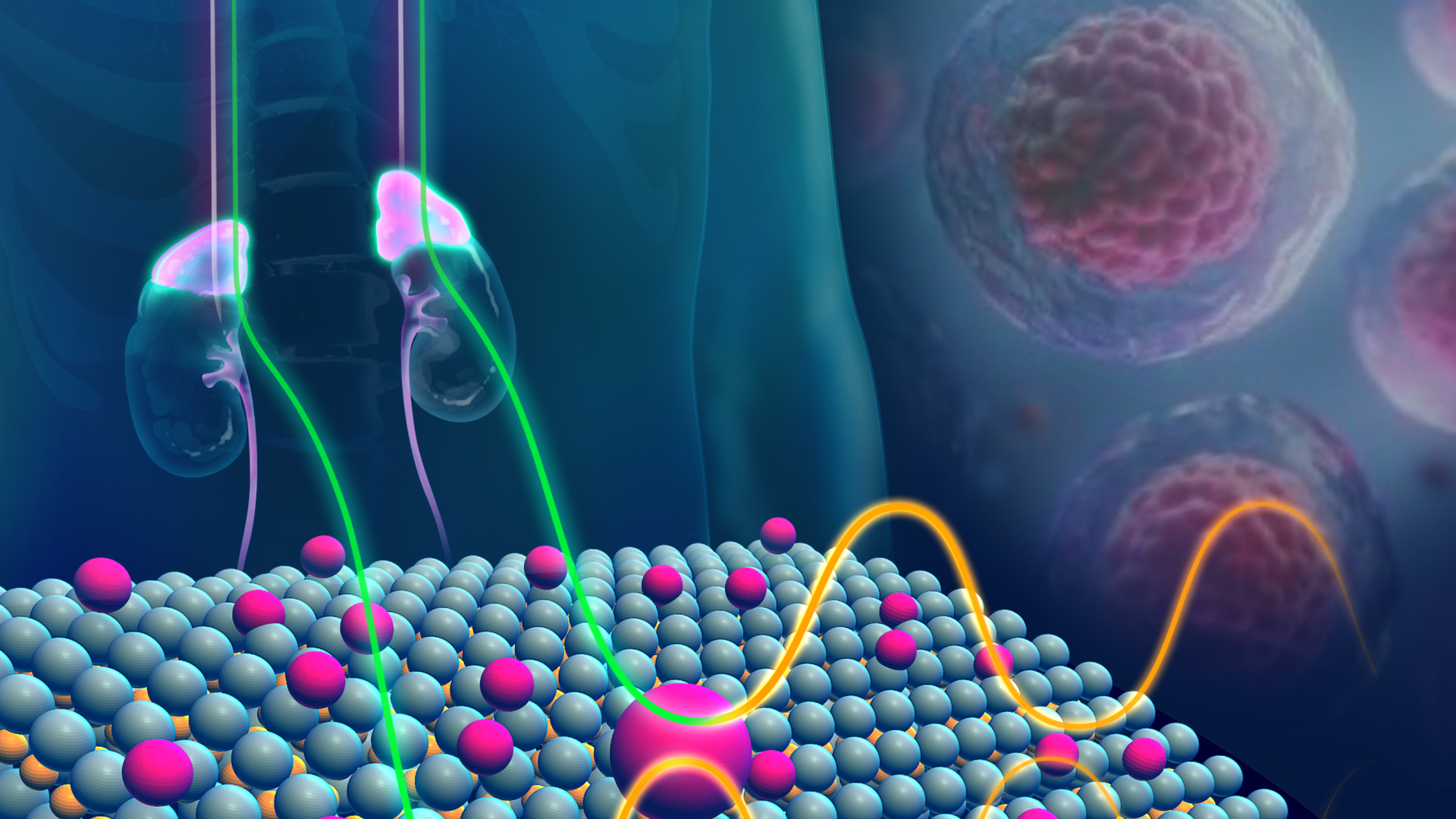Single atoms scattered across a nanosheet surface could offer a sensitive way to detect cancers. The atom-studded nanosheet could be incorporated into an electronic sensor to identify trace adrenal cancer biomarkers in a urine sample.
Cancers that could be detected in this way include neuroblastoma, one of the most commonly observed cancers in young children.
Cancers of the adrenal glands, located on top of the kidneys, can be identified by the release of biomarkers called catecholamines. “However, existing blood and urine tests used in hospitals to diagnose the health status of the adrenal gland are unreliable,” says Saptami Shetty, a bioengineering Ph.D. student in the lab of Khaled Nabil Salama, who led the research[1]. “We wanted to utilize the biosensing advantages of single-atom materials to develop a sensitive and reliable sensor targeting adrenal gland biomarkers,” she says.
The team developed a biosensor based on individual iron atoms anchored to a titanium carbide MXene nanomaterial. When this nanomaterial was deposited onto an electrode, the iron atoms acted as catalysts, oxidizing the catecholamines. “The oxidation process produces a detectable current that is directly proportional to the concentration of the biomarker,” Shetty says.
The sensor was six times more sensitive than an unmodified electrode for detecting catecholamines and their byproducts, the team showed. “The sensor performed well to detect catecholamines in complex samples, such as live cells or human urine samples,” Shetty says.
MXenes make excellent host materials for single-atom catalysts, explains Salama. The etching process used to make MXenes introduces abundant atomic defects and other sites that are suitable for capturing and stabilizing single-atom catalysts, he says. “The strong covalent interactions between MXenes and single atoms bring unusual catalytic performance and high stability,” he adds.
The MXene-supported single-atom catalyst for adrenal cancer detection is a blueprint for other biosensing applications, Shetty says. Single-atom catalyst/MXenes can be thought of as enzyme mimetics, she notes. Enzymes, which also often feature one or more single-metal atoms anchored to a protein backbone, have also been explored as biosensors.
“Enzymes are relatively expensive, associated with storage and shipping problems, and their performance as sensors depends on parameters such as pH, temperature and their orientation on the electrode,” Salama says. “MXene-supported single-atom catalysts are highly robust and do not require specific procedures to orient them on the electrode,” he adds.
“We can use our procedure to prepare a library of MXene-supported single-atom catalysts with different metals for different biosensor applications,” Shetty says.
REFERENCE
- Shetty, S.S., El-Demellawi, J.K., Khan, Y., Hedhili, M.N., Arul, P., Mani, V., Alshareef, H.N., Salama, K.N. Iron single-atom catalysts on MXenes for ultrasensitive monitoring of adrenal tumor markers and cellular dopamine. Advanced Materials Technologies 2202069 (2023).| article


